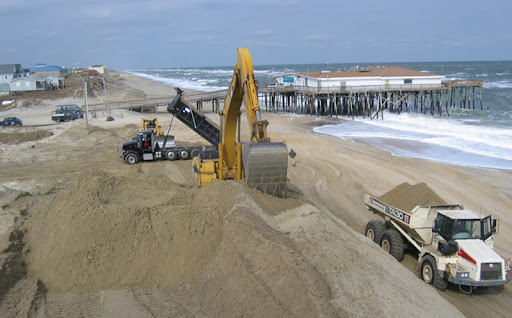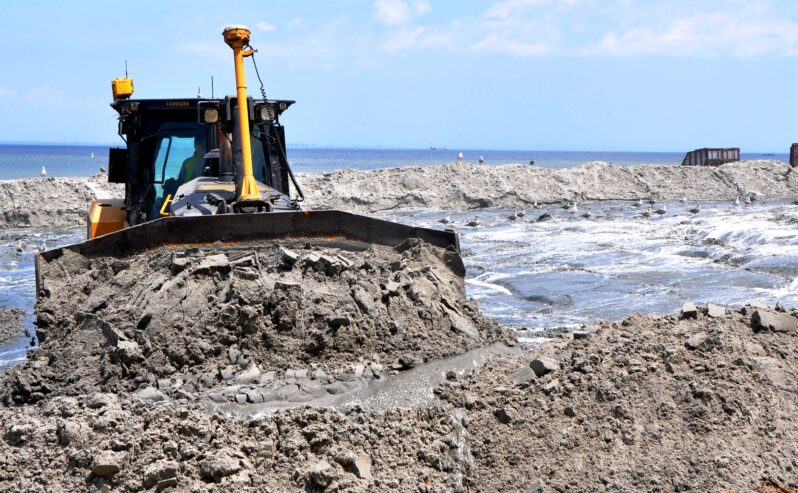Coastal Engineering: Navigating Challenges, Implementing Solutions
Coastal areas stand as dynamic interfaces where land and sea converge, serving as vital ecosystems, economic hubs, and cultural centers. However, they are also increasingly vulnerable to a myriad of threats, including sea-level rise, coastal erosion, storm surges, and anthropogenic impacts. In this blog, we delve into the field of coastal engineering, exploring the challenges it faces and the innovative solutions it employs to safeguard coastal communities and environments.
Understanding Coastal Engineering:
Coastal engineering is a multidisciplinary field that encompasses the planning, design, and management of coastal infrastructure and ecosystems. Its primary aim is to mitigate the risks associated with coastal hazards and enhance the resilience of coastal areas to natural and human-induced threats. From the construction of seawalls and breakwaters to the restoration of dunes and wetlands, coastal engineers employ a range of strategies to protect shorelines, stabilize coastlines, and manage coastal resources sustainably
Challenges Facing Coastal Engineering:
Coastal engineering faces a host of complex challenges, many of which are exacerbated by climate change and rapid urbanization. Sea-level rise, driven by melting glaciers and thermal expansion of seawater, poses a significant threat to coastal communities, increasing the frequency and severity of flooding and erosion events. Additionally, coastal erosion, exacerbated by factors such as wave action, storm surges, and human activities, threatens to erode shorelines, degrade habitats, and undermine infrastructure. Moreover, the increasing frequency and intensity of extreme weather events, such as hurricanes and tsunamis, further compound the vulnerability of coastal areas, putting lives, property, and ecosystems at risk.
Innovative Solutions in Coastal Engineering:
In response to these challenges, coastal engineers are pioneering innovative solutions to protect and sustain coastal areas. Nature-based approaches, such as beach nourishment, dune restoration, and wetland creation, harness the power of natural processes to enhance shoreline resilience and provide valuable habitat for biodiversity. Similarly, green infrastructure solutions, including living shorelines, oyster reefs, and mangrove forests, help to absorb wave energy, reduce erosion, and mitigate flooding, while also providing valuable ecosystem services and recreational opportunities.
Furthermore, engineered structures such as seawalls, revetments, and breakwaters provide essential protection against coastal hazards, helping to stabilize shorelines and protect critical infrastructure and assets. However, modern coastal engineering practices increasingly emphasize the importance of incorporating nature-based and hybrid solutions that blend the benefits of hard infrastructure with the ecological functions of natural systems.
Challenges and Opportunities:
Despite the progress made in coastal engineering, significant challenges remain, including limited funding, conflicting stakeholder interests, and uncertainties related to climate change projections. Moreover, the ethical and social implications of coastal engineering interventions, such as displacement of communities, loss of cultural heritage, and impacts on biodiversity, underscore the need for careful planning, stakeholder engagement, and adaptive management approaches.
However, these challenges also present opportunities for innovation, collaboration, and adaptation. By embracing principles of resilience, sustainability, and ecosystem-based management, coastal engineers can create solutions that not only reduce risks and enhance resilience but also promote social equity, ecological integrity, and community well-being. Moreover, advances in technology, such as remote sensing, numerical modelling, and geographic information systems (GIS), are facilitating more accurate assessments of coastal hazards and enabling engineers to design more effective and efficient solutions.
Conclusion
In conclusion, coastal engineering is at the forefront of efforts to protect and sustain coastal areas in the face of mounting challenges. By leveraging a combination of nature-based approaches, engineered structures, and innovative technologies, coastal engineers are working to mitigate the risks posed by climate change, coastal erosion, and other threats, while also preserving the unique ecological, cultural, and economic values of coastal regions. As we confront the complexities of a changing climate and a growing coastal population, the importance of coastal engineering in safeguarding our coastlines and communities will only continue to grow, guiding us towards a more resilient and sustainable future.





